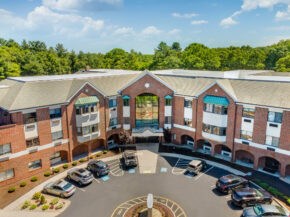Teen Drug Overdose Deaths & The Rise Of Fentanyl-Laced Pills

Many adolescents experiment with drugs due to curiosity, peer pressure, or a desire to self-medicate mental health issues. While it may be relatively common, teen drug use poses serious risks, including deadly overdoses.
In recent years, teen overdose deaths have skyrocketed, largely due to fentanyl-laced pills.
Teen Overdose Death Rates
According to public health researchers at the University of California, drug overdose deaths among teens increased by 94% between 2019 and 2020. They rose another 20% in 2021. Native American, Alaskan Native, and Latino teens faced the highest numbers of overdose deaths.
Some people assume that a surge in overdose deaths signals a surge in drug use. However, teen drug use has decreased in the past few years. The rise in fatal overdoses is instead a result of fentanyl-laced pills. In fact, in 2021, fentanyl was involved in 77% of teen overdose deaths.
The Rise Of Fentanyl-Laced Pills
Fentanyl is a synthetic opioid that doctors use to treat severe pain. Like other opioids, it’s a central nervous system depressant that slows down your breathing. However, it’s far more potent than most other opioids.
According to the Centers for Disease Control and Prevention (CDC), it’s up to 50 times more powerful than heroin and 100 times more powerful than morphine.
Some drug dealers secretly lace their products with fentanyl because it’s cheap to produce and provides a more intense high. Many adults accidentally ingest fentanyl in the powder forms of illicit drugs like heroin, cocaine, and methamphetamine.
Teens, however, are more likely to encounter fentanyl in pill form. The National Institute on Drug Abuse estimates that at least one third of illegally manufactured pills contain fentanyl. The most common types of fentanyl-laced pills used by teens include:
Prescription Opioids
Some teens abuse prescription opioids that are considered less dangerous than fentanyl, such as:
- hydrocodone (brand name Vicodin)
- hydromorphone (Dilaudid)
- oxycodone (OxyContin or Percocet)
- oxymorphone (Opana)
When abused, these painkillers can cause relaxation and euphoria (intense joy). They also pose a high risk of addiction and overdose, even if they don’t contain fentanyl.
Benzodiazepines
Benzodiazepines (also called “benzos”) are prescription drugs used to treat anxiety, insomnia, and seizures. Popular examples include:
- alprazolam (Xanax)
- clonazepam (Klonopin)
- diazepam (Valium)
- lorazepam (Ativan)
Like opioids, benzodiazepines have depressant, relaxing effects. Even when they’re not laced with fentanyl, they can be highly addictive.
Prescription Stimulants
Prescription stimulants are used to treat attention-deficit/hyperactivity disorder (ADHD) and narcolepsy (excessive sleepiness). They include:
- amphetamine (Adderall)
- dextroamphetamine (Dexedrine)
- lisdexamfetamine (Vyvanse)
- methylphenidate (Ritalin)
As stimulants, these drugs boost your energy, concentration, and alertness. Many teens abuse them to boost their academic performance. Prescription stimulant abuse can cause serious health problems, including addiction, seizures, and stroke.
How To Prevent Teen Overdose Deaths
When overdose deaths begin to rise among certain groups, they often continue rising for years. Fortunately, you can take steps to help end this trend and protect teens from fentanyl.
Educate Teens About Fentanyl-Laced Pills
Most teens who buy pills illegally don’t know about the dangers of fentanyl. Make sure your kids know what fentanyl is, how deadly it is, and how frequently it appears in other drugs.
Remind them that the only way to avoid fentanyl is to never buy drugs illegally. Instead, they should only use drugs as prescribed by a doctor.
Know The Signs Of Fentanyl Overdose
The sooner someone gets treated for a fentanyl overdose, the lower their risk of dying. That’s why it’s important to learn the signs of fentanyl overdose and share them with the teens in your life. The most common signs include:
- drowsiness
- dizziness
- change in pupil size
- pale, clammy skin
- bluish lips and/or fingernails
- nausea and vomiting
- slowed or stopped breathing
- slowed or stopped heartbeat
- loss of consciousness
If someone you know experiences these symptoms, call 911 right away.
Get Naloxone
Naloxone (brand name Narcan) is a medication that can rapidly reverse the effects of an opioid overdose. You can get it at most pharmacies without a prescription. Your pharmacist or health care provider can teach you how to use it in case of emergency.
Talk To Teens About Mental Health
Many teens abuse drugs to ease mental health concerns, such as:
- stress
- grief
- loneliness
- anxiety
- depression
- bipolar disorder
- post-traumatic stress disorder
- schizophrenia
You can lower your child’s risk of substance use and overdose by keeping an eye on their mental well-being. Encourage open, honest conversations about mental health, and discuss healthy coping skills like journaling, meditation, and physical activity.
Also, watch for symptoms of mental health issues. The most common signs of poor mental health among teens include:
- increased irritability
- sudden change in eating and/or sleeping habits
- trouble concentrating
- loss of motivation
- isolation from friends and family
If you notice these signs, help your child find professional treatment. An effective treatment plan often includes therapy, medication, and support groups.
To learn more about preventing teen drug use and overdose, please contact an Ark Behavioral Health specialist. Our substance abuse treatment programs offer personalized, evidence-based care to help your teen stay drug-free.
Written by Ark Behavioral Health Editorial Team
©2024 Ark National Holdings, LLC. | All Rights Reserved.
This page does not provide medical advice.
Centers for Disease Control and Prevention - Fentanyl Facts
The Journal of the American Medical Association - Trends in Drug Overdose Deaths Among US Adolescents, January 2010 to June 2021
United States National Library of Medicine - Opioid Overdose

Questions About Treatment?
Ark Behavioral Health offers 100% confidential substance abuse assessment and treatment placement tailored to your individual needs. Achieve long-term recovery.
100% confidential. We respect your privacy.
Prefer Texting?
Our friendly support team is here to chat 24/7. Opt out any time.

People Also Read
- Fentanyl Warnings
- Different Types Of Fentanyl
- Marijuana Abuse In Teens
- Preventing Teen Substance Abuse
- Does Your Child Have A Substance Abuse Issue?
- What Is Punding?
- The Rise Of Tranq Dope
- Accidental Drug Overdose
- Fake Fentanyl
- Fake Heroin Risks
- Children & The Opioid Pandemic
- Over-The-Counter Narcan






 Learn More
Learn More








